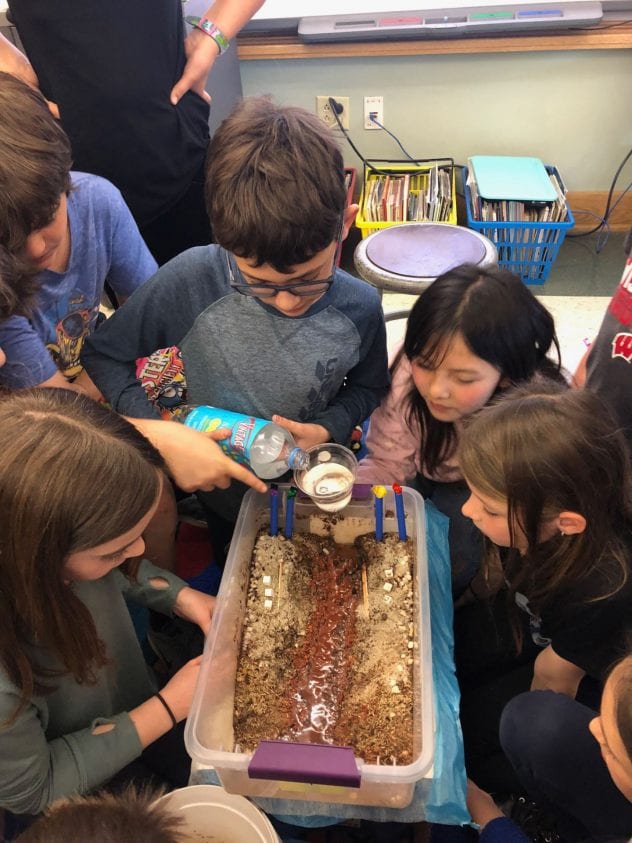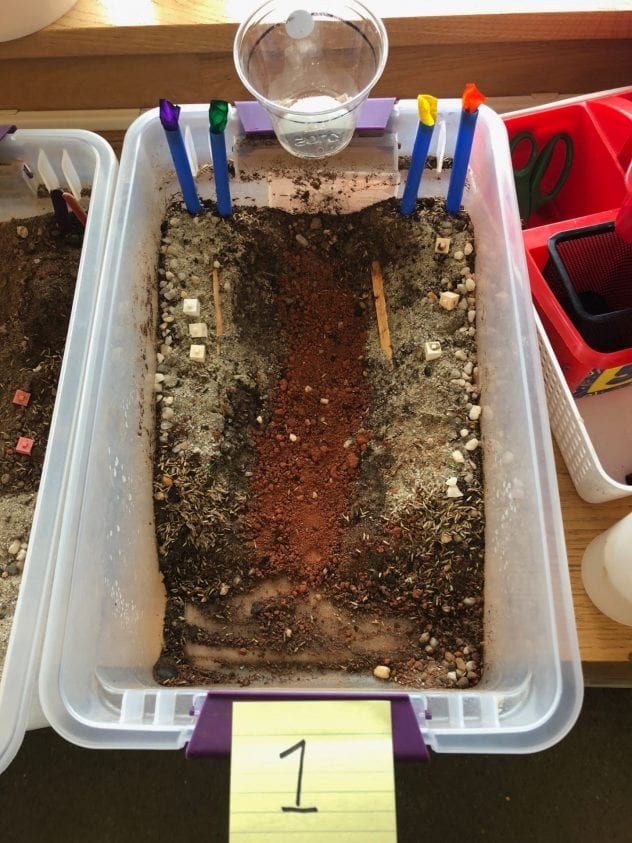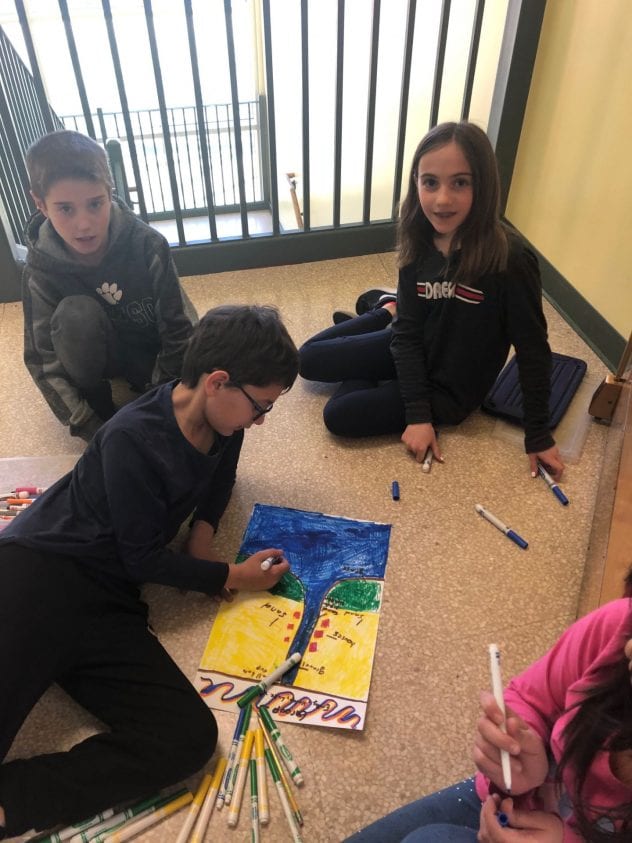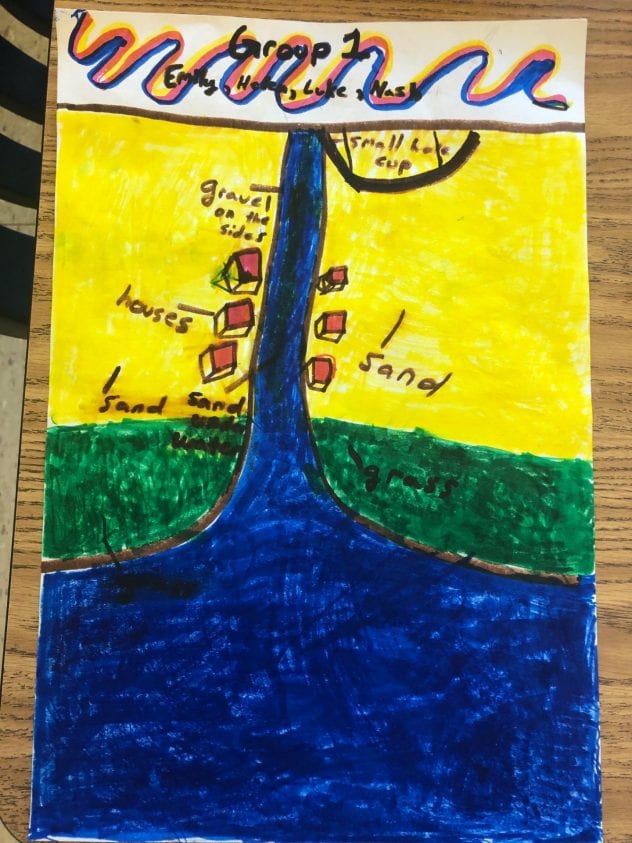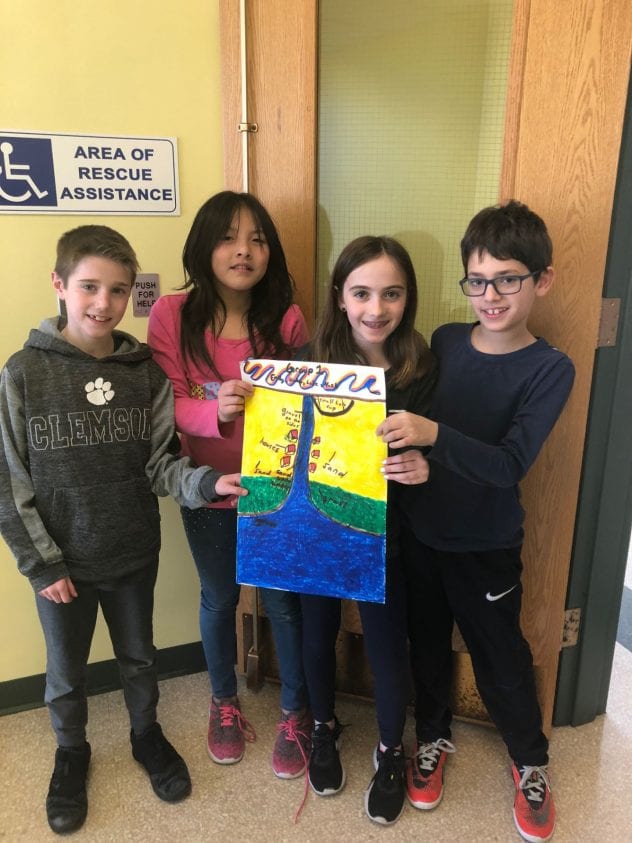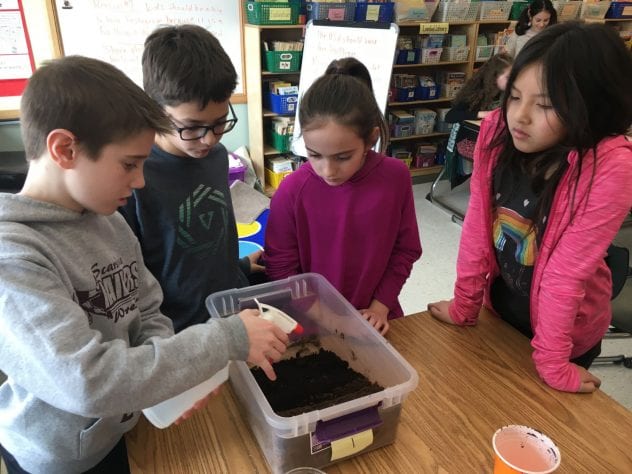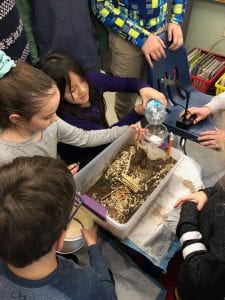- Did your landscape function the way in which you predicted?
Yes it did. We think it functioned the way we predicted it to because we made the stream wide and deep.
2. Consider your results, would you still locate your houses in the location you originally selected?
Yes
3. If you were to change your home site, where would you build the houses and why?
I would keep it the same
4. If you were to build your landscape again, what would you do differently?
I would ask for more time, and with that time I would use it to have more time for the grass to grow.
5. What have you seen outside of school that reminds you of something we studied in the unit? Explain your answer.
My grandparents’ house is on a lake, so it helped me get ideas of what we should do in this lesson.
6. Briefly write about how factors like soil type, slope, vegetation and flooding affect where it would be safe to live and to built a home. Use what you have learned throughout this unit to explain your answers.
The vegetation (grass) will hold the soil, so there is less erosion. Different soil types will do different things. For example, sand may absorb water wilt the water with gravel would go into the spaces in between. A flat land opposed to a slope will make the water flow slower.
